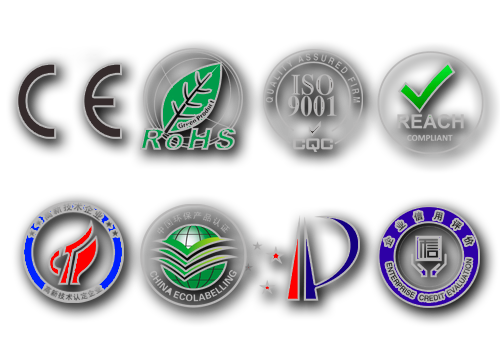The key role of stainless steel clean workbench in pharmaceutical factory
The key role of stainless steel clean workbench in pharmaceutical factory1. Provide a sterile operating environmentPrevention of microbial contamination In the process of drug production in pharmaceutical factories, many links need to be carried out under sterile conditions, such as vaccine preparation and injection filling. Stainless steel clean table through an efficient air filtration system, can effectively filter out bacteria, fungi, and other microorganisms in the air. Its high-efficiency filter can intercept particles with a diameter of 0.3μm or even smaller, and the filtration efficiency is as high as 99.99%, greatly reducing the possibility of microorganisms entering the drug production operation area. For example, in the process of producing antibiotics, even a very small amount of miscellaneous bacteria entering the reaction system can lead to a decline in the quality of the drug and even produce harmful impurities. The clean workbench is like a "sterile fortress" to ensure that the drug is not interfered with by microorganisms during the production process. To ensure drug quality and safety. For some drugs directly injected into the human body, such as intravenous injection, muscle injection, etc., sterility is the most basic and most important quality requirement. The production operation of these drugs in a clean workbench can ensure the sterility of the drugs from the source, thus ensuring the safety of the patients. The stability of drug quality has also been improved, reducing the occurrence of quality accidents such as drug recalls caused by microbial contamination. Two, control dust particles Avoid the effect of dust on medicine. Dust particles are a potential source of pollution in the production environment of pharmaceutical factories. During the manufacturing process, dust may carry microorganisms or react chemically with pharmaceutical ingredients. For example, during the tablet-pressing process of solid drugs, too many dust particles may be mixed into the drug, affecting the purity and quality of the drug. Stainless steel clean table through the initial effect and efficient filtration system, the air is filtered layer by layer, which can effectively remove dust particles in the air. The primary filter can intercept large particles of dust with a diameter of more than 5μm, while the HEPA filter further filters out smaller dust, ensuring a high level of air cleanliness in the work area, such as ISO level 5 (level 100) or higher, so that the drug production process is carried out in an almost dust-free environment. Meet the requirements of Good Manufacturing Practice (GMP) GMP has strict regulations on the cleanliness of the drug production environment. Pharmaceutical companies must ensure that the drug production process is carried out in an environment that meets certain cleanliness standards. The use of a stainless steel clean workbench helps pharmaceutical factories meet the requirements of GMP for dust particle control. For example, in the packaging of drugs, operating in a clean workbench can prevent dust particles from adhering to the drug packaging, making the appearance of the drug packaging clean, but also ensuring the quality of the drug in the packaging process. 3. Protect the health of operators Prevent drug dust and harmful gas inhalation. In some production links of pharmaceutical factories, such as the crushing of raw materials and drug mixing, a large amount of drug dust may be generated. This dust, if inhaled by the operator, may cause damage to the respiratory tract, lungs, etc. In addition, some drugs may produce harmful gases during production. The air circulation system of the stainless steel clean workbench can effectively discharge dust and harmful gases from the operating area. For example, in the spray drying process of drugs, the vertical or horizontal laminar flow of the clean workbench can quickly take away the drug dust generated during the drying process, avoiding the operator's exposure to high concentrations of dust environment and protecting their health. Provide a safe workspace. The stainless steel shell of the clean workbench has good corrosion resistance and stability. In the pharmaceutical environment, various chemical agents may be used to clean and disinfect the workbench, and the stainless steel shell can withstand the erosion of these chemicals. At the same time, its structural design also considers the convenience and safety of the operation, such as the height of the workbench and the size of the operating space for the operator to work for a long time, reducing the safety risks caused by inconvenience. 4. For drug testing and quality control Accurate drug testing environment In the quality control laboratory of the pharmaceutical factory, the composition, content, and purity of the drug need to be accurately tested. The stainless steel workbench provides a clean and stable environment for this inspection work. For example, when using high-performance liquid chromatography (HPLC) to analyze the composition of drugs, a clean air environment can prevent dust particles from interfering with the instrument and ensure the accuracy of the test results. For some drug testing methods with high environmental requirements, such as genetic testing, microbial limit testing, etc., a clean workbench is essential. It ensures that test samples are processed in a pollution-free environment, reducing the occurrence of false positive or false negative results. Ensure the reliability of quality control. By performing drug quality control work on a clean workbench, pharmaceutical companies can more accurately assess the quality of drugs. For example, in the stability test of drugs, the retention sample observation of drugs in a clean environment can more truly reflect the quality changes of drugs during storage. This helps the pharmaceutical factory to discover drug quality problems in time and take corresponding measures, such as adjusting the production process and improving the packaging, so as to ensure the reliability of drug quality. |

 German
German French
French Italian
Italian Portuguese
Portuguese Japanese
Japanese Korrean
Korrean Russian
Russian




